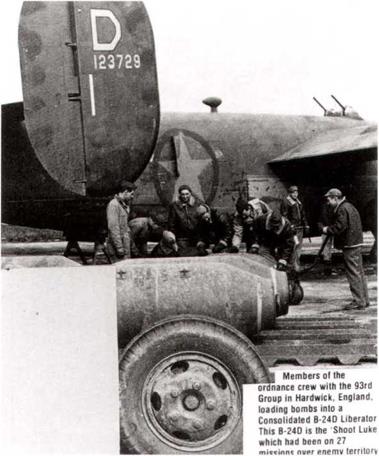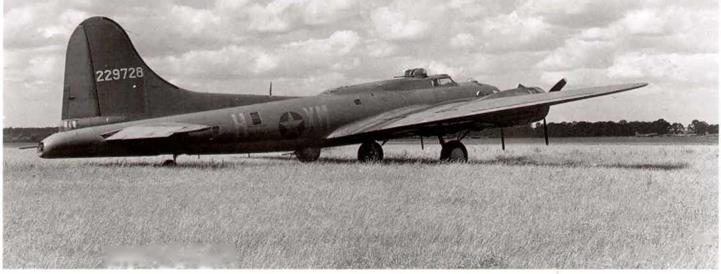Commander of AAF Anti-submarine Command on February 13, 1943 urgently requests a T. O. for suitable camouflage from Director of Technical Services, HQ USAAF
The continuing lack of a technical order, containing instructions for the application of a suitable camouflage to his anti-submarine aircraft, caused the Commander of AAF Anti-submarine command on February 13,1943, to urgently request the Director of Technical Services, at HQ AAF, Washington, DC. to issue such a document. He must have been really exasperated, because, as we saw in the last chapter, his command had run tests some ten months earlier in addition to those run by the Proving Ground.
However, only three days previously, the Production Division had sent an extra priority teletype to the Aircraft Modification Section. This read as follows:
It is requested that all airplanes destined for the Anti-submarine Command be camouflaged as follows:
1. Under and vertical surface, Insignia White #46.
2. Upper surfaces, Olive Drab (no change).
The above camouflage scheme for anti-submarine airplanes supersedes previous directives which specify Insignia White for under and vertical surfaces and Gray #43 for upper surfaces. This new camouflage requirement will also apply to the one B-26 airplane destined for use on Project MK-92 and other B-25 airplanes destined for use in the future.
Army requests that Dark Olive Drab be superseded as the new standard aircraft camouflage color by a different one, February 18, 1943.
On February 18, 1943, the Director of Military Requirements asked the JAC Technical Sub-Committee on Camouflage to consider an Army request to change the standard Dark Olive Drab to a different one. The recent proposal to standardize the Dark Olive Drab in place of the British Dark Slate Gray and Dark Green had not yet been approved for release as a new color standard. The Army requested that a new Lusterless Olive Drab, Class 204, be adopted as the new standard. This request was approved by the JAC on March 2,1943 (this change has not been generally known and caused a great deal of confusion in determining the exact shade of the Olive Drab used on USAAF aircraft from 1943. See Chapter 7 for the full story).
Army and Navy release new A-N Aeronautical Spec. AN-I-9, Insignia; National Star (for airplane exterior), dated March 1,
1943.
This new national star insignia spec, applied to all Army and Navy aircraft, and was to be effective no later than September 1, 1943. However, it could be used at any earlier date after promulgation. The new spec, required the following:
The insignia is to be applied with lacquers, dopes or enamels compatible with the local aircraft finish. Decalcomanias can be used. The gloss of the insignia is to match the adjacent surface. Colors used are to conform to the A-N standard color cards for non-specular (matte) insignia and to the ANA color standards for glossy insignia.
 Consolidated B-24D-1-CO, 41-23729, was the «2nd B-24-D-1 built. It is seen here in April 1943, serving with the 93rd BG, Eighth Air Force. Note that the yellow ring has been painted over with insignia blue on the fuselage grayed-out cocarde. The vertical line on the fin indicates the first squadron in the group, the 328th BS. (USAF)
Consolidated B-24D-1-CO, 41-23729, was the «2nd B-24-D-1 built. It is seen here in April 1943, serving with the 93rd BG, Eighth Air Force. Note that the yellow ring has been painted over with insignia blue on the fuselage grayed-out cocarde. The vertical line on the fin indicates the first squadron in the group, the 328th BS. (USAF)
 Consolidated B-24D-1-CO, 41-23711, Aircraft *B’, in Dark Olive Drab and Neutral Gray, “Jerk’s Natural”, of the 328th BS, 93rd BG, Eighth Air Force. She had been deployed to North Africa and returned, hence the RAF fin flash. The previous yellow outer ring on the fuselage insignia has been repainted Insignia Blue. (USAF)
Consolidated B-24D-1-CO, 41-23711, Aircraft *B’, in Dark Olive Drab and Neutral Gray, “Jerk’s Natural”, of the 328th BS, 93rd BG, Eighth Air Force. She had been deployed to North Africa and returned, hence the RAF fin flash. The previous yellow outer ring on the fuselage insignia has been repainted Insignia Blue. (USAF)
‘ ■
Boeing B-17F-65-BO, 42-29728 of the 332nd BS, 94th BG, 4th Bomb Wing, based at Bury St. Edmunds, Eighth Air Force. Shown in the spring of 1943, it has the typical grayed-out cocarde and carries the British issued code letters XM, aircraft H. (USAF)
The national insignia is an insignia white five pointed star inside an insignia blue circumscribed circle. It is to be applied so that in the normal flight attitude of the airplane one point of the star points up on vertical surfaces or forward on horizontal surfaces.
Two insignia are to be used on the wings of all airplanes. One is to be placed on the upper surface of the left wing and one on the lower surface of the right wing. On biplanes one is to be placed on the upper surface of the upper left wing and the other on the lower surface of the lower right wing. They are to be placed at a distance from the wing tip equal to one-third of the distance from the fuselage to the wing tip and tangent to the aileron cut out. If space is not available for the minimum size specified, the insignia can be moved inboard the minimum distance necessary.
Wing insignia are to have a maximum diameter of 60 inches and a minimum diameter of 30 inches. Standard sizes are to be in multiples of 5 inches. The diameter used is to be the standard size closest to, but not exceeding, 90 percent of the distance between the leading edge of the wing and the aileron cut out at the point of application.
Fuselage insignia are to be placed on each side of the fuselage approximately midway between the trailing edge of the wing and leading edge of the stabilizer, but the insignia is never to be placed closer than 35 inches to the trailing edge of the
|
t Douglas P-70 Havoc, with small white number “165” on nose, is seen in the current flat black camouflage all over. (USAF) |
wing. The insignia can be moved fore or aft of the mid-point to avoid covering transparencies. If the fuselage section between the wing and the stabilizer is not able to accommodate the minimum size specified, the fuselage insignia can be moved to other parts of the fuselage where it can be readily seen from the side.
The fuselage insignia are to have a maximum diameter of 50 inches and a minimum diameter of 20 inches, and are to come in standard sizes in multiples of 5 inches. The diameter selected is to be the standard size which comes nearest to, but does not exceed being 75 percent of the projected height of the fuselage side at the point of application.
This new joint spec, superseded Spec. 98-24102 and Spec. 24114. As a result Spec. 98-24102 was finally canceled on May 21, 1943.











